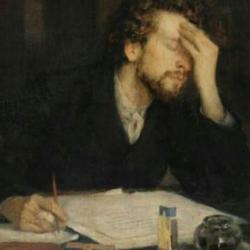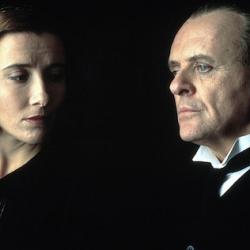Michael Dobson notes ( Shakespeare: An Illustrated Stage History ) that the restoration of drama in 1660 was not really a restoration but a re-creation, involving “a transformation of the London theatre, carried out by royal warrant” tht “forever altered the relationship between drama and the state, the design and location of playhouses, and the typical composition of theatrical companies.” The dramatic sensibility had shifted: “Sumptuously baroque in costume and music, technologically sophisticated in design and elegant in diction, the Shakespeare of the Restoration and early eighteenth-century stage belong at least as much to the Enlightenment as to the Renaissance.”
Restoration dramatic sensibilities were “largely imposed on the theatrical world from above,” since “the first great novelty of the Restoration theatre, and that which mandated and shaped all the others, was the unprecedented involvement of teh Crown in the running of the public playhouses.” Plays began spontaneously as early as 1659, but on August 21, 1660, “Charles II issued a warrant to Thomas Killigrew and Sir William Davenant appointing them as the respective patentholders of two royal theatrical troupes,” and these groups were given a monopoly of all “legitimate theatrical activity in London.”
Restoration Shakespeare was thus a very different animal than the original. The patenholders were, for starters, not theatrical entrepreneurs but courtiers, and thus “the new patent companies were designed in the first instance to serve the monarchy rather than the market.” Charles enjoyed the theater, but he “also recognized the potential value of the stage as a means of consolidating his precariously restored royal authority through the propagation of a revived royalist culture.” In part this was done by transforming the plays into impressive spectacles, “public expressions of royal magnificence.” Sets and costumes on this scale cost money, and admission charges were raised accordingly. This changed the social configuration of the audience, the sociological change in playgoing was “reaffirmed by the new theatres’ location” nearer the royal palace than the commercial center of town. Dobson says “it would be many years before London’s playhouses would again cater to so large a percentage of its population as had the Globe, the Rose, and their competitors.” Pepys saw servants, apprentices and citizens in the audiences, but “from 1660 onwards the theatre would belong to the elegant West End.”
Playhouses reflect these changes as well. Open theater ended, and instead of depicting a cosmology (the stage between Heaven and Hell) as in Shakespeare’s day, it became a “specific, secular three-dimensional space.” The space was often impressively classical. Christopher Wren’s Theatre Royal in Drury Lane was a neo-classical structure: “the pillars at either side of the proscenium arch are exactly half-way between the front and back walls of the 112-foot long building, and exactly bisect the raked acting area – the curved front of the forestage extends, at its central point, 20 feet into the auditorium, while the ‘scene’ or picture-stage with its peepshow-like seven sets of flats goes back a corresponding 20 feet behind the proscenium.”
Further, for the first time, actresses played the female roles. Charles II may well have become accustomed to actresses onstage during exile in Paris, but their introduction to the English stage may also have been seen “as a particularly vivid means of both demonstrating and celebrating the defeat of Puritanism.”
Shakespeare certainly was part of the revival of theater, but he was by no means the favored dramatist – Jonson, Beaumont, and Fletcher were preferred. And they were preferred partly because their plays matched the courtly sensibilities of the new theater. Shakespeare’s inclusion of “punning rustics” was seen as a defect. Dryden said in 1679 that “the tongue in general is so much refined since Shakespeare’s time, that many of his words, and more of his Phrases, are scarce intelligible . . . and his whole style is so pestered with Figurative expressions, that it is as affected as it is obscure.” Margaret Cavendish had to defend Shakespeare against the charge that his plays were “made up only with Clowns, Fools, Watchmen, and the like.” Dryden claimed that Jonson, Beaumont, and Fletcher offered “more regular” plots than Shakespeare, “and they understood and imitated the conversation of Gentlemen much better.” The distribution of patents between Killigrew and Davenant reflected these critical assessments: The more prestigious King’s Company (Killigrew) performed Jonson and Fletcher, with a few Shakespeare plays; the second-rank Duke’s Company (Davenant) had the rest of the Shakespeare canon to use.
Davenant was able to overcome this disadvantage and make the Duke’s Company far more successful than its rival. He did this in part by adjusting Shakespeare to contemporary sensitivies. The patents had required that “profane, obscene and scurrilous passages” from the plays should be “reformed and made fit” for the stage. Davenant complied, but also made aesthetic changes, sometimes to accommodate the new staging conventions but sometimes to avoid offensively earthy language (Hamlet’s “to grunt and sweat” becomes “to groan and sweat”). Davenant’s revivals set a pattern for the century: “From the 1660s until the late eighteenth century, many of Shakespeare’s plays, as the title-pages of contemporary acting editions put it, would be ‘Revived, with Alterations.’”
This was a commercial as well as an aesthetic decision. Some unrevised plays did well, but many were failures until radically changed: “Pepys’s comments on these various revivals seem especially revealing; without rewriting, Shakespeare’s plays were liable ot seem merely fanciful, ‘silly,’ or ‘insipid,’ especially when placed alongside the biting social comedies and exotically operatic tragedies which were beginning to displace the old plays from the stage.”














